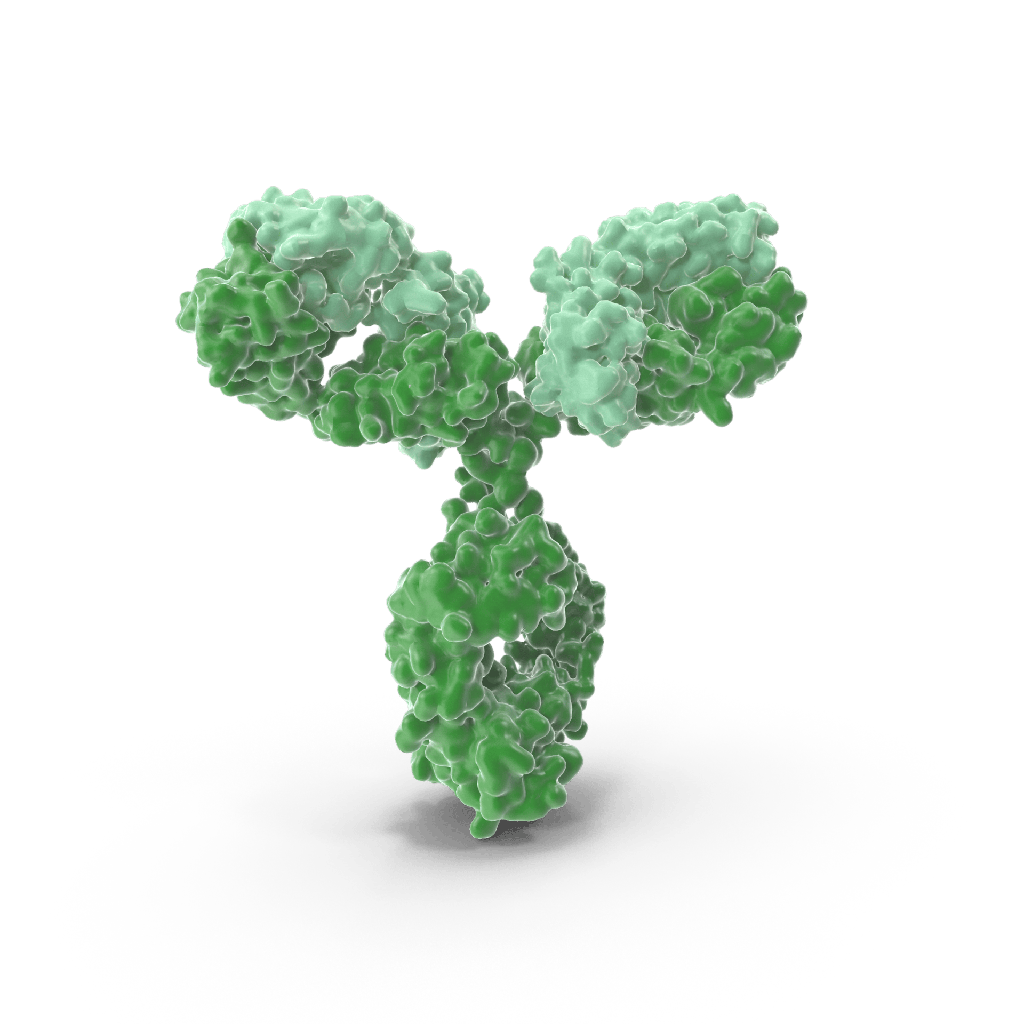Anti-G gamma3 Rabbit Polyclonal Antibody - 100 μL
Anti-Gamma3 Rabbit Polyclonal Antibody: A Detailed Overview
Introduction
Anti-Gamma3 Rabbit Polyclonal Antibody is a critical tool for researchers studying the Gamma3 subunit of the G protein-coupled receptor (GPCR) signaling pathway. G proteins are essential for transmitting signals from cell surface receptors to intracellular targets, and Gamma3 is a key player in this process. This antibody is specifically designed to detect Gamma3, allowing for the study of its role in various physiological and pathological processes. It is used in a variety of immunological assays and can provide insights into cellular responses to external signals, such as hormones, neurotransmitters, and growth factors.
Structure and Function
The Anti-Gamma3 Rabbit Polyclonal Antibody is generated by immunizing rabbits with a specific antigen derived from the Gamma3 protein. The antibody is polyclonal, meaning it is composed of a mixture of antibodies that target different epitopes on the Gamma3 protein. This feature provides several advantages, including greater sensitivity and the ability to recognize a range of Gamma3 protein forms or isoforms.
Gamma3, a subunit of the G protein complex, plays a significant role in mediating signal transduction by interacting with G-protein coupled receptors (GPCRs). It is involved in regulating various intracellular pathways, including those controlling cellular growth, differentiation, and metabolism. The antibody binds to specific epitopes of Gamma3, allowing for its detection and study in various biological contexts.
Applications
- Western Blotting (WB): Anti-Gamma3 Rabbit Polyclonal Antibody is commonly used in Western blotting applications to detect the presence and quantity of Gamma3 in cell or tissue lysates. This technique involves separating proteins by size through gel electrophoresis and transferring them to a membrane for antibody-based detection. The antibody binds to Gamma3, and a secondary antibody conjugated with an enzyme (e.g., HRP) is used for visualization. This application is valuable for confirming the expression of Gamma3 in various tissue types and conditions.
- Immunohistochemistry (IHC): In IHC, the antibody is applied to tissue sections to localize Gamma3 protein expression within histological samples. The antibody can be used to study the distribution of Gamma3 in various tissues, including the brain, heart, and other organs. It is particularly useful for understanding the role of Gamma3 in tissue-specific functions and its involvement in disease states.
- Immunofluorescence (IF): Anti-Gamma3 Rabbit Polyclonal Antibody can be conjugated with fluorescent dyes for use in immunofluorescence microscopy. This allows researchers to visualize Gamma3 localization within cells and tissues. Fluorescent-tagged antibodies enable the study of protein distribution in live cells or fixed tissues, providing valuable insights into cellular signaling processes.
- Flow Cytometry: The antibody can be used in flow cytometry to quantify Gamma3 expression on the surface of cells or within intracellular compartments. Flow cytometry allows for the analysis of multiple parameters at the single-cell level, making it a powerful tool for studying the dynamics of Gamma3 expression in response to various stimuli.
- Enzyme-Linked Immunosorbent Assay (ELISA): This antibody can be employed in ELISA assays for the quantification of Gamma3 in cell culture supernatants, serum, or other biological fluids. ELISA provides a highly sensitive method for detecting low concentrations of Gamma3, making it useful for screening applications and biomarker studies.
- Neutralization Assays: In some applications, Anti-Gamma3 Rabbit Polyclonal Antibody is used in neutralization assays to block the function of Gamma3. By inhibiting its activity, researchers can explore the functional role of Gamma3 in various signal transduction pathways. This is particularly useful in studies involving GPCR signaling and cellular responses to external stimuli.
Binding Specificity and Cross-reactivity
The specificity of the Anti-Gamma3 Rabbit Polyclonal Antibody is highly important for its successful application. Since polyclonal antibodies are derived from multiple B-cell clones, they target various epitopes on the Gamma3 protein. This makes them more versatile in detecting the protein in different forms or post-translational modifications. However, polyclonal antibodies can sometimes exhibit cross-reactivity with other proteins that share similar epitopes. Researchers should verify the antibody’s specificity by using negative controls and confirming that the observed signal corresponds to the Gamma3 protein.
The antibody is typically specific to Gamma3, but some cross-reactivity with other related G-protein subunits or isoforms might occur, depending on the nature of the antigen used for immunization. Validation through techniques such as ELISA, Western blotting, and immunofluorescence can help ensure that the antibody is detecting Gamma3 specifically in the context of the experiment.
Isotype and Conjugates
The antibody is available in a rabbit IgG isotype, which is suitable for most immunological assays. It can also be conjugated to various secondary labels, including enzymes (e.g., horseradish peroxidase or alkaline phosphatase) or fluorophores (e.g., FITC, Alexa Fluor). The choice of conjugate depends on the experimental requirements, such as the need for sensitivity, resolution, or compatibility with specific detection systems.
Limitations
While Anti-Gamma3 Rabbit Polyclonal Antibody is a powerful tool for detecting Gamma3 in a variety of assays, there are some limitations to consider:
- Cross-reactivity: Depending on the experimental system, the antibody may show cross-reactivity with other proteins, particularly those sharing similar epitopes or homology.
- Tissue-Specific Expression: Gamma3 may be expressed at low levels in certain tissues or cell types, making it difficult to detect in some contexts without amplification methods or more sensitive detection systems.
- Sensitivity: Polyclonal antibodies, while sensitive, may exhibit batch-to-batch variability, so it is essential to confirm antibody performance across experiments.
Conclusion
Anti-Gamma3 Rabbit Polyclonal Antibody is an essential reagent for studying the Gamma3 subunit of G proteins in signal transduction pathways. Its versatile applications in techniques such as Western blotting, immunohistochemistry, flow cytometry, and ELISA make it invaluable for investigating the role of Gamma3 in cellular signaling, immune responses, and disease mechanisms. By allowing the specific detection of Gamma3, this antibody provides insights into its function and its involvement in the regulation of various physiological processes. Researchers can use it to explore the mechanistic aspects of G-protein signaling and develop targeted therapeutic strategies for diseases associated with altered Gamma3 function.

